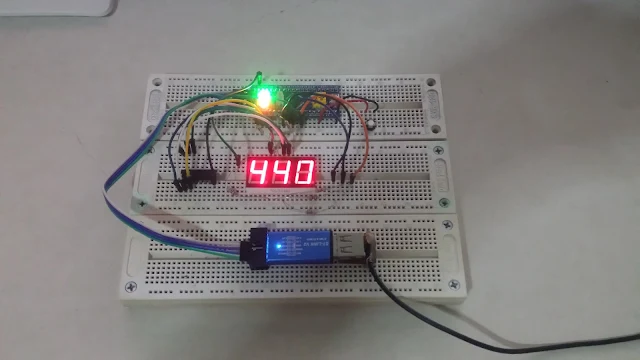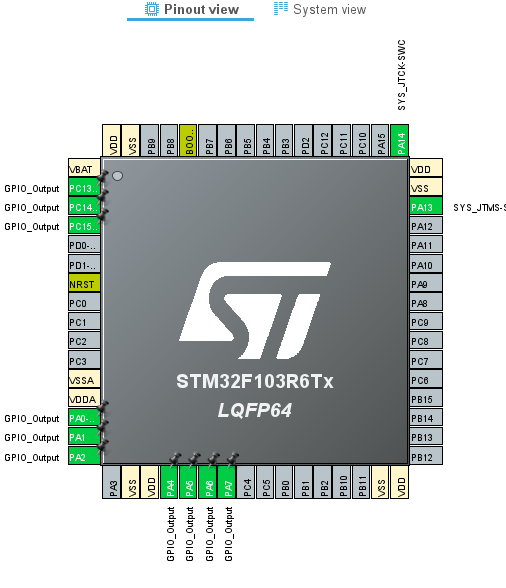SysTick is a timer inside the STM32 ARM processor. We can use this time to schedule any task in microcontroller program. It's simple to use in STM32Cube IDE. In this example, I use this timer to drive a three-digit multiplexing display.
 |
| Running program on breadboard |
 |
| Wiring diagram |
STM32CubeIDE is a good choice for me because it's free to use.
Click here to download its source file. For other similar posts please check,
- Getting Started With STM32F103C8T6 Module with STM32CubeIDE
- STM32F103C8T6 Blue Pill SysTick and Multiplexing Display Example
- STM32F103C8T6 Blue Pill Switch And Multiplexing Display Interface Using SysTick
- STM32F103C8T6 Blue Pill SysTick LED Blinking

No comments:
Post a Comment